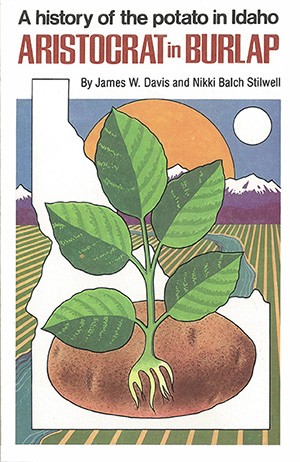 Stamping was considered the answer to the identification problem.
Stamping was considered the answer to the identification problem.
Later that year, an advertising agency report to the Commission indicated the impact that "millions of newspaper advertisements" had made since the start of the potato promotional program. They showed samples, quantities, and costs of sales promotion material used to date, including restaurant potato flags and menu inserts, recipe folders, display material, and trade broadsides.
John Greenlee, the President of Cline/Inc., presented charts showing by year the values of Idaho® potatoes produced annually since 1937, when it was $7,312,000, to 1954-55, when it was $45,288,000. The peak was $64,170,000 in 1953. He also reported the increased unloads in markets where advertising had been used, and reported that since 1937 the U.S. per-capita consumption of Idaho® potatoes had increased 14% while the consumption of all white potatoes had declined 16%.
Contracts with out-of-state repackers for the use of the "Grown in Idaho" registration marks were in force in 1956, which enabled the Commission to better track the use and abuse of the Idaho name as a marketing tool.
The year 1957 saw Clyde Domeny join C.G. Rice and Dean Probert to become the third full-time dealer serviceman working major U.S. food markets. That same year, the Legislature passed a bill allowing the name Idaho Potato and Onion Commission to replace Idaho Advertising Commission.
One of many trademark violations occurred in 1958 when a Canadian shipping firm began advertising Russet potatoes as "Idaho Type Russets," and the Commission concluded that not only did the Idaho® potato need to be identified as being grown in Idaho, it needed to be identified as to where it was packed.
The end of Lee Belier's career with the IP&OC, after 12 years as Commission secretary, came with his resignation in 1958. He was replaced by Gerald A. Lee.
Later, in 1959, a Commission regulation was directed to all companies making bags for Idaho® potatoes: all Idaho® potatoes packaged for human consumption are to be identified with the "Grown in Idaho" trademark and also "Packed in Idaho by . . . is to be imprinted on the bag in appropriate-sized type.


 Stamping was considered the answer to the identification problem.
Stamping was considered the answer to the identification problem.